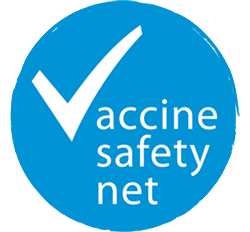Working Together to Defeat Invasive Meningococcal Disease

[ French version below ]
Written by:
Lucie Marisa Bucci, Senior Manager, Immunize Canada
Megan Acton, Program Manager, International Federation on Ageing
April 24 is World Meningitis Day, and on this day, the International Federation on Ageing (IFA) together with the Confederation of Meningitis Organisations (CoMO) and Immunize Canada want to remind you that meningococcal disease is a health risk you should not take. As we grow older, our immune system does not function as well as it once did. We become more susceptible to infectious diseases at a time when illness can lead to complications, hospitalization, and changes in health, and affect our ability to be independent.
Vaccines and proper hygiene like washing your hands with soap and water are vital tools for reducing our risk of illness throughout our life course, because outbreaks of infectious diseases can occur in our community at any time. Several vaccine-preventable diseases continue to be endemic in Canada. Invasive meningococcal disease (or IMD) is one of those diseases. It is a serious disease caused by five groups of meningococcal bacteria, namely – A, B, C, Y, and W-135, and while it occurs at low rates, it poses a serious threat to our health and well-being.
According to the World Health Organization (WHO), epidemics of IMD occur frequently, particularly in areas of the world where IMD is endemic. [1] In Canada, meningococcal B and meningococcal C are the primary causes of infection.[2] However, surveillance data indicates that meningococcal Y is more frequent in adults 65 years and older.[3] In fact, meningococcal Y accounts for 50% of IMD infection in this age group, and is the cause of severe complications such as septic shock, pneumonia and meningitis. For the most part, IMD health outcomes in older adults are devastating.[4] Ten to 20% of IMD survivors face secondary effects that are life changing such as long-term disability, neurological complications, hearing loss, limb amputations, and motor/cognitive impairment.[5] Death occurs in approximately 10% of IMD cases.[6]
However, over the last 20 years, immunization programs against IMD have been very successful. These programs have primarily targeted children, adolescents, and young adults. The protection of older adults has been found to be an indirect benefit of these programs, supported by evidence of disease reduction due to lower transmission rates.[vii] However, there is uncertainty regarding the lasting impact of this immunity on older adults. Therefore, vigilance remains important in adult populations that remain under immunized and for adults who are at higher risk.
For example, Canadian national immunization recommendations focus on the protection of adults at higher risk of IMD infection.[viii] These include adults with a spleen that is either not working or has been removed; deficiency of complement, properdin or factor D; sickle cell disease; and HIV, particularly if congenitally acquired. Other groups of adults at high risk include those who live in residential accommodation or plan to travel abroad to areas with high rates of endemic IMD or transmission, such as the meningitis belt of sub-Saharan Africa and pilgrimages to the Hajj in Mecca, Saudi Arabia.
While immunization is the most effective way to reduce the risk of IMD illness, access to vaccines for adults may vary between Canadian provinces and territories. Vaccines not part of routine vaccinations for adults may be accessed via a health care provider at a cost. Everyone wants to make the right choices to maintain their health, and it is more important than ever for you to be immunized against IMD. Talk with your health care provider about which vaccines are available in your area.
“Meningitis affects millions of people every year but it doesn’t have to. This World Meningitis Day we can all play a role in helping to defeat meningitis by 2030. Even small actions can make a difference – whether that’s learning the signs and symptoms, finding out the preventative options available to you and being fully immunised, or starting a conversation about the disease and its after effects, “says Chris Head, The President of the Confederation of Meningitis Organisations (CoMO). IMD is a devastating illness, but together we can defeat it.
Everyone can get involved to #DefeatMeningitis. For more information, visit: http://www.comomeningitis.org/world-meningitis-day/
www.immunize.ca
https://www.vaccines4life.com/
https://www.meningitis.org/
https://www.meningitis.ca/en/Home.aspx
______________________________________
[1] World Health Organization (WHO), Meningococcal Meningitis. Available at: https://www.who.int/news-room/fact-sheets/detail/meningococcal-meningitis
[2] Gilca R, Deceuninck G, Lefebvre B, Tsang R, Amini R, et al. (2012) The Changing Epidemiology of Meningococcal Disease in Quebec, Canada, 1991–2011: Potential Implications of Emergence of New Strains. PLoS ONE 7(11): e50659.
[3] Baccarini C, Ternouth A, et al. The changing epidemiology of meningococcal disease in North America 1945-2010. Hum Vaccin Immunother. 2013;9(1):162-171.
[4] Sadarangani M, Scheifele DW, Halperin SA, Vaudry W, Le Saux N, Tsang R. Outcomes of invasive meningococcal disease in adults and children in Canada between 2002 and 2011: A retrospective cohort study. Clinical Infectious Diseases. 2015;60(8):e27-235.
[5] Pace D, Pollard AJ. Meningococcal disease: clinical presentation and sequelae. Vaccine. 2012;30(suppl2):B3-9.
[6] Nadel S. Ninis N. Invasive meningococcal disease in the vaccine era. Front Pediatr. 2018;6:321.
[7] Barrow R, Alarçon P, Carlos J, Caugant DA, Christensen H, Debbag R, et al. The Global Meningococcal Initiative: global epidemiology, the impact of vaccines on meningococcal disease and the importance of herd protection. Expert Review of Vaccines. 2017;16(4):313-328.
[8] National Advisory Committee on Immunization (NACI). An Advisory Committee Statement (ACS): Update on Quadrivalent Meningococcal Vaccines Available in Canada. April 2015. Available at: https://www.canada.ca/en/public-health/services/publications/healthy-living/update-quadrivalent-meningococcal-vaccines-available-canada.html

Travaillons ensemble pour vaincre les maladies invasives à méningocoques
Lucie Marisa Bucci, Gestionnaire principale des programmes, Immunisation Canada
Megan Acton, Gestionnaire des programmes, International Federation on Ageing (IFA)
En ce 24 avril, Journée Mondiale de la Méningite, la International Federation on Ageing (IFA), en collaboration avec la Confederation of Meningitis Organisations (CoMO) et Immunisation Canada, vous rappelle que les maladies à méningocoques posent un risque pour la santé que nous ne devrions pas prendre. En vieillissant, notre système immunitaire ne fonctionne plus aussi bien qu’avant. Nous sommes plus susceptibles de contracter des maladies infectieuses à une période de la vie où ces maladies peuvent entraîner des complications, des hospitalisations et des changements de notre état de santé, et menacer notre autonomie.
Les vaccins et de bonnes habitudes d’hygiène, comme le lavage des mains à l’eau et au savon, sont essentiels toute la vie pour réduire nos risques de maladies, car il peut y avoir des éclosions de maladies infectieuses dans notre communauté en tout temps. Plusieurs maladies évitables par la vaccination sont encore endémiques au Canada. Les maladies invasives à méningocoques (ou MIM) en font partie. Ce sont des maladies graves causées par cinq groupes de bactéries méningococciques : A, B, C, Y et W-135; leurs taux de prévalence sont faibles, mais elles posent une grave menace à notre santé et bien-être.
Selon l’Organisation mondiale de la santé (OMS), des épidémies de MIM surviennent fréquemment, surtout dans les régions du monde où les MIM sont endémiques[1]. Au Canada, la méningococcie B et la méningococcie C sont les principales causes d’infection[2]. Par contre, les données de surveillance indiquent que la méningococcie Y est plus fréquente chez les adultes de 65 ans et plus[3]. En fait, la méningococcie Y représente 50 % des infections à MIM dans cette tranche d’âge et cause de graves complications, comme le choc septique, la pneumonie et la méningite. En général, les résultats sanitaires des MIM chez les personnes âgées sont dévastateurs[4]. De 10 à 20 % des survivants de MIM éprouvent des effets secondaires bouleversants : incapacités de longue durée, complications neurologiques, pertes auditives, amputations de membres et déficiences motrices/cognitives[5]. La mort survient dans environ 10 % des cas de MIM[6].
Au cours des 20 dernières années toutefois, les programmes de vaccination contre les MIM sont devenus très efficaces. Ils ciblent principalement les enfants, les adolescents et les jeunes adultes. La protection des personnes âgées constitue un avantage indirect de ces programmes; des signes de réduction de la maladie sont observés avec la diminution des taux de transmission[7]. Une incertitude subsiste cependant quant à la durabilité de cette immunité chez les personnes âgées. C’est pourquoi la vigilance reste de mise dans les populations adultes encore sous-immunisées et chez les adultes les plus à risque.
Par exemple, les vaccins recommandés à l’échelle nationale au Canada sont axés sur la protection des adultes les plus à risque d’être infectés par les MIM[8]. Il s’agit des adultes dont la rate n’est plus fonctionnelle ou a été enlevée, qui ont un déficit en complément, en properdine ou en facteur D, qui sont atteints de drépanocytose ou qui sont atteints du VIH, surtout s’il est congénital. Les autres groupes d’adultes à risque élevé sont ceux qui vivent en résidence et ceux qui planifient un voyage à l’étranger dans une région où les taux de MIM endémiques ou de transmission des MIM sont élevés, comme dans la ceinture de la méningite en Afrique subsaharienne, ou un pèlerinage à La Mecque, en Arabie saoudite.
La vaccination est le moyen le plus efficace de réduire le risque de MIM, mais l’accès des adultes aux vaccins peut varier d’une province et d’un territoire à l’autre au Canada. Les vaccins qui ne sont pas sur la liste de vaccination systématique des adultes peuvent être obtenus auprès du personnel soignant, mais ils ne sont pas gratuits. Nous voulons tous faire le bon choix pour préserver notre santé, et il est plus important que jamais de nous faire vacciner contre les MIM. Demandez à votre professionnel de la santé quels sont les vaccins disponibles dans votre région.
« La méningite touche des millions de personnes à chaque année – mais il ne devrait pas aller ainsi. Cette Journée Mondiale de la Méningite, nous pouvons tous jouer un rôle dans les efforts pour vaincre la méningite d’ici à 2030. Même les petits efforts peuvent faire une différence – que ce soit apprendre à reconnaître les signes et symptômes, se renseigner au sujet des options préventatives disponibles, soit se faire vacciner, ou lancer la conversation sur la maladie et ses séquelles. » — Chris Head, président, Confederation of Meningitis Organisations (CoMO). Les MIM sont des maladies dévastatrices, mais ensemble, nous pouvons les vaincre.
Tout le monde peut contribuer à #VaincrelaMéningite. Pour plus de détails, visitez : www.comomeningitis.org/world-meningitis-day
www.immunize.ca/fr
www.vaccines4life.com/
www.meningitis.org/
www.meningitis.ca/fr/Home.aspx
______________________________________
[1] Organisation mondiale de la santé (OMS). Méningite à méningocoques. Sur Internet : https://www.who.int/fr/news-room/fact-sheets/detail/meningococcal-meningitis
[2] Gilca, R., G. Deceuninck, B. Lefebvre, R. Tsang, R. Amini et coll. « The changing epidemiology of meningococcal disease in Quebec, Canada, 1991–2011: potential implications of emergence of new strains », PLoS ONE, vol. 7, no 11 (2012), p. e50659.
[3] Baccarini, C., A. Ternouth et coll. « The changing epidemiology of meningococcal disease in North America 1945‑2010 », Human Vaccines & Immunotherapeutics, vol. 9, no 1 (2013), p. 162-171.
[4] Sadarangani, M., D.W. Scheifele, S.A. Halperin, W. Vaudry, N. Le Saux et R. Tsang. « Outcomes of invasive meningococcal disease in adults and children in Canada between 2002 and 2011 : a retrospective cohort study », Clinical Infectious Diseases, vol. 60, no 8 (2015), p. e27-235.
[5] Pace, D., et A.J. Pollard. « Meningococcal disease: clinical presentation and sequelae », Vaccine, vol. 30, suppl. 2 (2012), p. B3-B9.
[6] Nadel, S., et N. Ninis. « Invasive meningococcal diseases in the vaccine era », Frontiers in Pediatrics, vol. 6 (2018), p. 321.
[7] Barrow, R., P. Alarçon, J. Carlos, D.A. Caugant, H. Christensen, R. Debbag et coll. « The Global Meningococcal Initiative: global epidemiology, the impact of vaccines on meningococcal disease and the importance of herd protection », Expert Review of Vaccines, vol. 16, no 4 (2017), p. 313-328.
[8] Comité consultatif national de l’immunisation (CCNI). Mise à jour sur l’utilisation des vaccins quadrivalents contre le méningocoque au Canada, déclaration du comité consultatif (DCC), avril 2015. Sur Internet : https://www.canada.ca/fr/sante-publique/services/publications/vie-saine/mise-a-jour-utilisation-vaccins-quadrivalents-contre-meningocoque-canada.html






